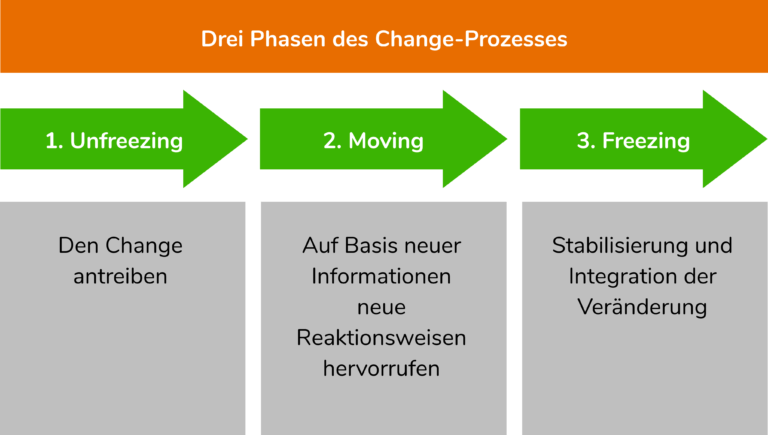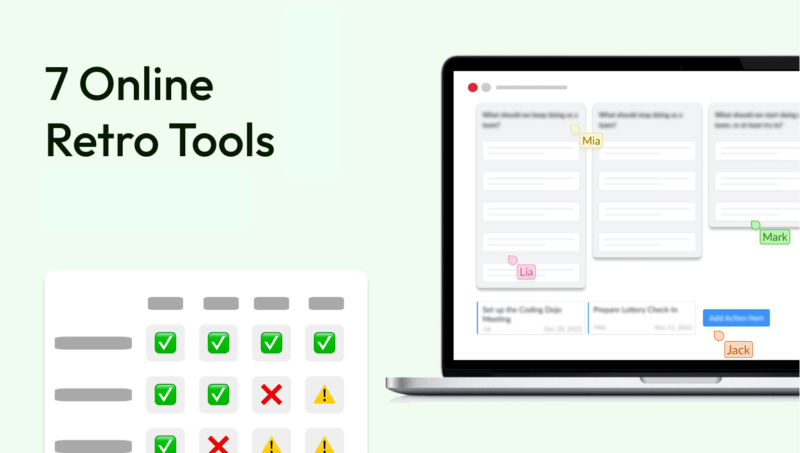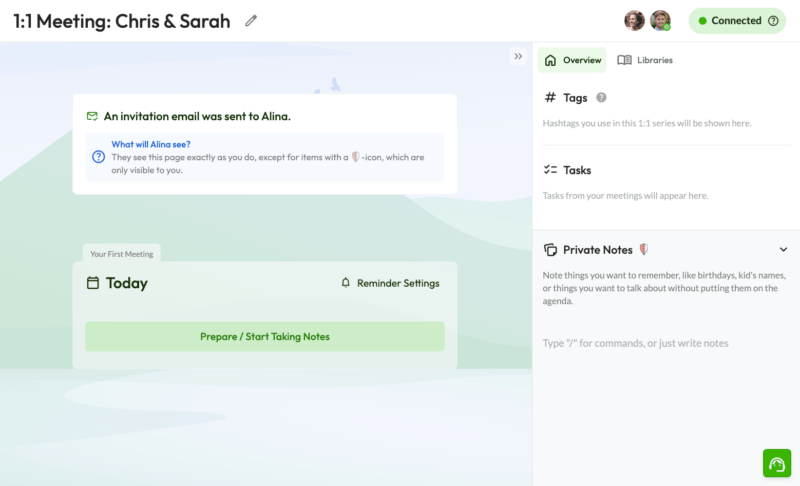Next to the Model by Kotter, Lewin's change management model is one of the most influential models on the subject of change.
Due to changed framework conditions and increasing competition as a result of globalization, companies are in today's world VUCA-World increasingly exposed to change. As a result, managers are additionally burdened and challenged. Change management In this context, models can provide important support for successfully managing change.
Change Management Lewin - The Basic Idea
Lewinwho became the forefathers of Social psychology counts, field theory developed in the 1940s. The basic idea includes the transfer of force fields from physics to social contexts. He differentiates between two types of forces:
- Accelerating Forces – Forces that push for change
- Retarding forces – Forces that oppose change
The retarding forces want to maintain stability and the status quo. In contrast, the retarding forces support the change and want to break up existing structures. Both types of forces are equal and are needed to successfully manage change. The company faces the challenge of keeping these forces in balance. If the retarding forces predominate, the company stagnates and falls victim to resistance. On the other hand, the company lacks time to establish itself as soon as the accelerating forces dominate.
The three phases of Lewin's change management model
In order for a company to be able to successfully cope with a change, it must go through three phases of change: Lewin differentiates in its change management model between the three phases of unfreezing, moving and freezing. The first phase includes the “thawing” of the current situation, the second phase the actual change work and thus the transition from the old to the new state. Finally, in the third phase, Lewin describes the “freezing” of the current state. The following figure illustrates the three phases of the model.

To make the phases clearer, these are explained using an example: Imagine a bakery that had to temporarily close its business during the lockdown as a result of the Corona crisis and therefore now wants to switch to a delivery service.
- Phase: Unfreezing
At first the organization is in an inner equilibrium. To drive change, the accelerating forces must prevail. Only then is the need for change recognized. Managers should make it clear what needs to be changed. It is also important that management take employees' doubts and concerns seriously and respond to them.
Example: The manager of the bakery calls the employees together for a meeting and explains the current situation to them. It makes it clear that the company has to switch to a delivery service in order to continue to cover the fixed costs. Some employees worry that customers will not accept the delivery service and prefer to buy their baked goods in the supermarket. The managing director takes these concerns seriously and discusses them in the meeting.
- Phase: Moving
Continuous changes characterize the second phase of the model. Open communication is of great importance so that misunderstandings and open questions from those involved are clarified in order to avoid the emergence of rumors. In order to implement new behaviors as quickly as possible, managers should involve employees in the process. As a rule, the performance level initially sinks in this phase, as internal resources are required for the change and consequently employees cannot develop their full performance potential.
Example: In the meeting, the managing director records all open questions from employees and answers them in detail and openly. She also tries to involve employees in the process by regularly asking for suggestions for improvement.
Is your company currently in a change? Then using our software tool could help you. It develops managers into coaches for their teams. You can see how Miele integrates Echometer into the retro process at the following link.
- Phase: Freezing
The aim of the third phase is the long-term consolidation and integration of the changes in the corporate culture. Thus, an equilibrium between the two forces should be established again. Sufficient time must be planned for this phase so that the company does not fall back into old behavior. To prevent this, the management should continuously carry out an analysis of the current situation. According to Lewin's change management model, it is important that successes are celebrated and that management offers employees support in the form of training courses or workshops. The company's performance curve is either back at the same level as before the change or higher.
Example: In the near future, the managing director and the deputy managing director will continuously carry out analyzes of the current situation. After the first fifty orders have been delivered, the managing director praises the employees for celebrating the first success. Workshops are offered several times a week, especially at the beginning, to support employees in the new situation.
The following figure shows the distribution of the two forces during the three phases:

Change Management Lewin - Conclusion
Lewin divides the change process into three phases which a company must go through to successfully implement a change. In order to maintain an organization in the long term, it is necessary that there is a balance between the opposing weights. Hopefully the example mentioned has contributed to a better understanding!
Sources – Change Management Lewin
Lauer T. (2019): Change Management. Basics and success factors, 3rd edition, Wiesbaden: Springer Fachmedien.
Lewin K. (1947): Frontiers in Group Dynamics: Concept, Method and Reallity in Social Science, Social Equality and Change, in: Human Relations 1 (1), pp. 5-41 [online] https://journals.sagepub.com/doi/abs/10.1177/001872674700100103







